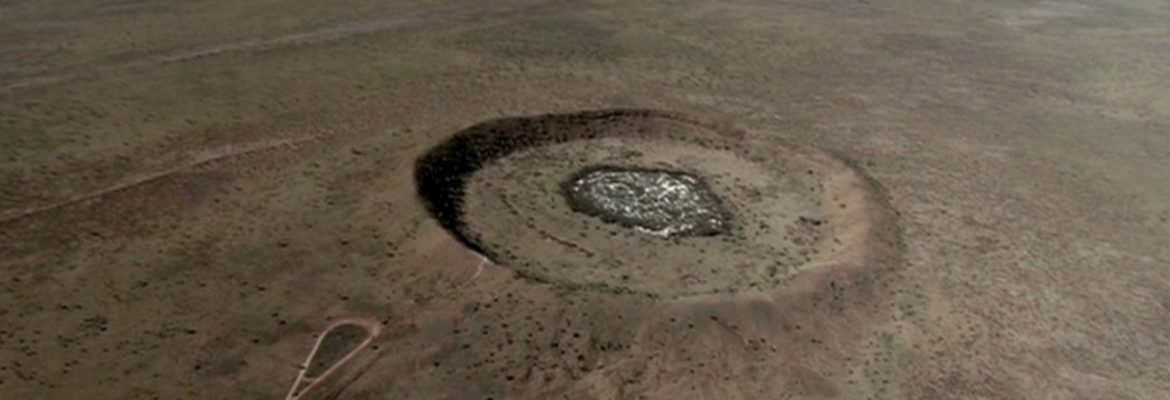The Wolfe Creek meteorite crater was only discovered by Europeans during an aerial survey in 1947. However, it has long been known to Aboriginal people, who called it Kandimalal, and tell of two rainbow snakes who formed the nearby Sturt and Wolfe Creeks as they crossed the desert. The crater is believed to be the place where one snake emerged from the ground.
Sightseeing, walking, photography and nature observation are the most popular activities. Viewing the crater rim is a must. Another spectacular way to view the crater is to take an aerial flight from Halls Creek. A camping area in the national park is free to visitors and includes cleared sites and toilets.
A 200 metre return walk to the top of the crater rim involves a steep rocky climb. Climbing down into the crater is not permitted because the steep terrain and loose rocks make it dangerous. Among the broken rocks on the crater wall you may see a brown ringtail dragon stalking insects that frequent the flowering shrubs. Mammals are active at dawn and dusk, avoiding the heat of the day. Spectacular and noisy Major Mitchell cockatoos harvest seeds from the wattles and paperbarks of the crater floor.
For a camping holiday with a difference, you can visit the spectacular Wolfe Creek Crater, the second largest meteorite crater in the world. The campground has an information shelter and toilets, and is accessible only by four wheel drive (4WD). Campers are advised to bring enough drinking water for the duration of their stay. Camping fees do not apply at this campground; however, park entry fees apply at Wolfe Creek Crater National Park.


